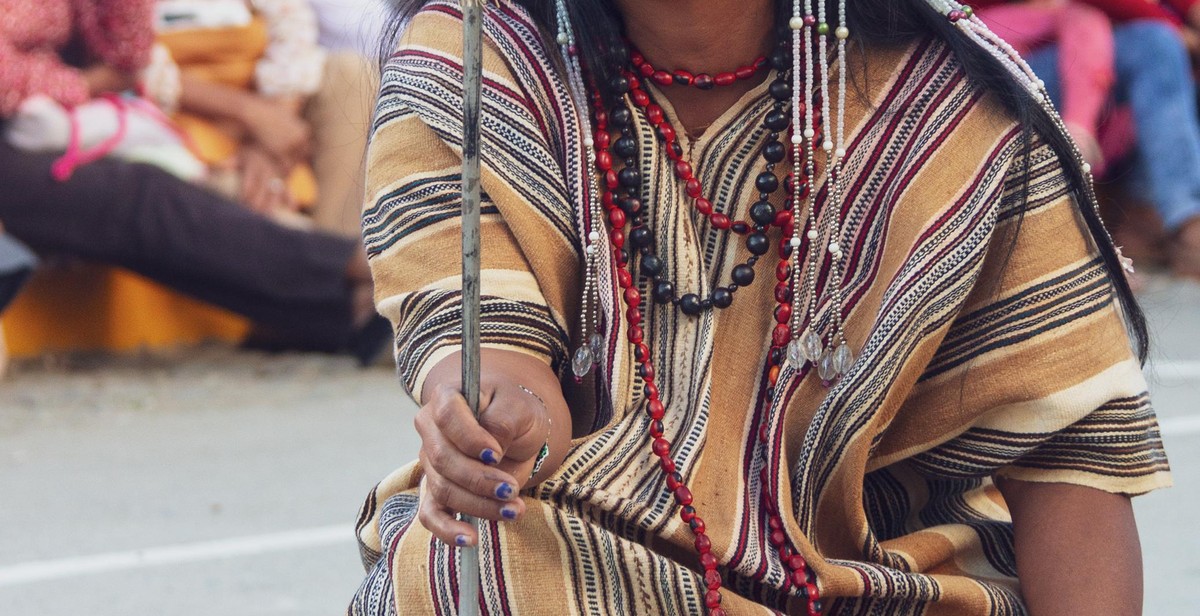How to Experience Central American Indigenous Culture: Authentic Encounters and Cultural Immersion
As a seasoned traveler and content creator, I have had the pleasure of experiencing many different cultures throughout my journeys. However, the most unique and enriching experiences have been my encounters with Central American Indigenous Culture.
During my travels, I have had the privilege of visiting various Indigenous communities in countries such as Guatemala, Honduras, and Belize. These encounters have allowed me to gain a deeper understanding and appreciation of the rich history, traditions, and way of life of these communities.
One of the most memorable experiences was staying with a Mayan family in Guatemala. I was able to witness firsthand their daily routines, learn about their customs and beliefs, and even participate in a traditional Mayan ceremony. This immersive experience allowed me to connect with the community on a personal level and gain a new perspective on their way of life.
If you are interested in experiencing Central American Indigenous Culture, there are many ways to do so. In this article, I will share my tips and recommendations for authentic encounters and cultural immersion.
Why Experience Central American Indigenous Culture?
The Indigenous communities of Central America have a rich and unique history that dates back thousands of years. Their traditions, customs, and beliefs have been passed down through generations and have remained largely unchanged despite the influence of modern society.
- Authentic cultural experiences
- Learn about history and traditions
- Connect with local communities
- Support sustainable tourism
In addition to the cultural and educational benefits, experiencing Central American Indigenous Culture also supports sustainable tourism. By participating in community-based tourism, you are contributing to the local economy and helping to preserve the culture and way of life of these communities.
Understanding Central American Indigenous Culture
Central America has a rich and diverse indigenous culture that dates back to pre-Columbian times. The region is home to many different indigenous communities, each with their own unique history, traditions, and customs that have been passed down from generation to generation.
History of Central American Indigenous Culture
The indigenous cultures of Central America have a long and complex history that spans thousands of years. Before the arrival of the Spanish in the 16th century, the region was home to a number of different indigenous civilizations, including the Maya, Aztec, and Inca.
Today, many of these ancient civilizations have left behind impressive architectural and cultural legacies that continue to fascinate and inspire visitors from all over the world.
Cultural Beliefs and Practices
Central American indigenous cultures are characterized by a deep respect for nature and the environment. Many indigenous communities believe in a close connection between humans, animals, and the natural world, and have developed unique practices and rituals to honor and protect their natural surroundings.
Religion also plays an important role in many Central American indigenous cultures, with many communities practicing a blend of traditional beliefs and Catholicism.
Languages Spoken by Indigenous Communities
There are many different indigenous languages spoken throughout Central America, including Maya, Nahuatl, and Quechua. In addition to these traditional languages, many indigenous communities also speak Spanish or other modern languages as a result of colonization and globalization.
Challenges Faced by Indigenous Communities
Despite their rich cultural heritage, many Central American indigenous communities face a number of challenges, including poverty, discrimination, and lack of access to education and healthcare.
As a result, many indigenous communities are working to preserve and promote their cultural traditions and practices, while also advocating for their rights and recognition.
Why Cultural Immersion is Important
Cultural immersion is an important way to learn about and appreciate the rich and diverse indigenous cultures of Central America. By experiencing firsthand the customs, traditions, and beliefs of different communities, visitors can gain a deeper understanding and appreciation of the region’s cultural heritage.
Moreover, cultural immersion can also provide economic opportunities and support for indigenous communities, helping to promote sustainable tourism and development.

Authentic Encounters with Central American Indigenous Culture
Central America is a region rich in indigenous culture, with diverse communities that maintain their traditions, languages, and customs. Visiting these communities and learning from locals is an excellent way to experience their authentic way of life and support their sustainable development. Here are some ways to have authentic encounters with Central American indigenous culture:
Participating in Indigenous Ceremonies and Festivals
Indigenous ceremonies and festivals are an essential part of their culture and offer a unique opportunity to witness their spiritual beliefs and practices. Many of these ceremonies and festivals are open to visitors, but it’s important to respect their traditions and follow their guidelines. Some popular events to attend include the Day of the Dead in Guatemala, the Inti Raymi in Guatemala, and the Garifuna Settlement Day in Belize.
Visiting Indigenous Communities and Learning from Locals
Visiting indigenous communities is an excellent way to learn about their way of life, customs, and traditions. Many indigenous communities offer homestays, where visitors can stay with local families and participate in their daily activities. It’s essential to be respectful of their cultural norms, ask permission before taking photos, and follow their guidelines. Some popular indigenous communities to visit include the Kuna Yala in Panama, the Mayan communities in Guatemala, and the Embera in Panama.
Supporting Indigenous-Owned Businesses and Cooperatives
Supporting indigenous-owned businesses and cooperatives is an excellent way to support their sustainable development and empower their communities. Many indigenous communities offer handmade crafts, textiles, and organic food products that are unique to their culture. By purchasing these products, you are supporting their livelihoods and preserving their cultural heritage. Some popular indigenous-owned businesses and cooperatives to support include the Cojolya Association in Guatemala and the Ngabe Bugle women’s weaving cooperative in Panama.
| Tip | Example |
|---|---|
| Learn some basic phrases in their language | Learn how to say “hello,” “thank you,” and “goodbye” in the local indigenous language. |
| Respect their cultural norms | Ask permission before taking photos and follow their guidelines. |
| Support their sustainable development | Purchase handmade crafts, textiles, and organic food products from indigenous-owned businesses and cooperatives. |
Visiting and learning from Central American indigenous communities is an enriching experience that allows you to connect with their culture and support their sustainable development. By participating in indigenous ceremonies and festivals, visiting indigenous communities, and supporting indigenous-owned businesses and cooperatives, you can have an authentic encounter with Central American indigenous culture.
Cultural Immersion Programs
Central America is a region that is rich in indigenous culture, and there is no better way to experience it than through a cultural immersion program. These programs offer a unique opportunity to learn about the traditions, customs, and way of life of indigenous communities in Central America.
Overview of Cultural Immersion Programs
Cultural immersion programs are designed to allow visitors to experience the culture of a community by living with local families or in community-owned accommodations. These programs are typically led by local guides who are knowledgeable about the history, traditions, and lifestyle of the community. Visitors will have the opportunity to participate in daily activities such as cooking, farming, and crafting, as well as attend cultural events and ceremonies.
Cultural immersion programs are available in various lengths, from a few days to several weeks, and can be customized to fit the interests and needs of the visitor. These programs are ideal for those who want to learn about indigenous culture in a meaningful and authentic way.
Benefits of Cultural Immersion Programs
Cultural immersion programs offer a range of benefits to visitors. Firstly, they provide a unique opportunity to learn about indigenous culture from the perspective of locals. Visitors will gain a deeper understanding of the history, traditions, and way of life of the community, and will have the chance to ask questions and engage in conversations with locals.
Additionally, cultural immersion programs allow visitors to develop cross-cultural communication skills and build relationships with locals, which can lead to a greater appreciation and understanding of different cultures. These programs also support local communities by providing an economic boost through tourism and promoting cultural preservation.
Choosing the Right Cultural Immersion Program
When choosing a cultural immersion program, it is important to consider a few factors. Firstly, consider the length of the program and whether it fits with your schedule and interests. Also, research the organization or tour operator offering the program to ensure they have a good reputation and are committed to responsible tourism practices.
It is also important to consider the level of comfort and amenities provided during the program. Some programs may require visitors to stay in basic accommodations or participate in physically demanding activities, while others may offer more comfortable accommodations and leisurely activities.
Lastly, consider the cost of the program and whether it fits with your budget. Keep in mind that cultural immersion programs are often more expensive than traditional tourism activities, but the experience and knowledge gained can be invaluable.
| Pros | Cons |
|---|---|
| Opportunity to learn about indigenous culture from locals | Programs can be more expensive than traditional tourism |
| Chance to develop cross-cultural communication skills | Programs may require visitors to participate in physically demanding activities |
| Support local communities | Accommodations may be basic |

Conclusion: Experiencing Central American Indigenous Culture
Experiencing Central American Indigenous Culture is a unique and unforgettable experience that can enrich one’s life in many ways. Through authentic encounters and cultural immersion, visitors can gain a deeper understanding and appreciation of the rich traditions and customs of the region’s indigenous communities.
Authentic Encounters
Authentic encounters with Central American Indigenous Culture can take many forms, from visiting traditional villages and participating in cultural events to learning about traditional crafts and practices from local artisans. These experiences offer a glimpse into the daily lives and traditions of indigenous communities, providing visitors with a deeper appreciation of the region’s rich cultural heritage.
Cultural Immersion
Cultural immersion is another important aspect of experiencing Central American Indigenous Culture. By staying with local families or participating in community activities, visitors can gain a deeper understanding of the values and beliefs of indigenous communities. Immersion experiences can also help visitors develop a greater sense of empathy and understanding for the challenges faced by these communities.
Final Thoughts
Experiencing Central American Indigenous Culture is a unique and enriching experience that can broaden one’s horizons and deepen one’s appreciation for the diversity of human culture. Whether through authentic encounters or cultural immersion, visitors can gain a deeper understanding of the traditions and customs of the region’s indigenous communities, and develop a greater appreciation for the richness and complexity of Central American culture.
- Experience the rich traditions and customs of Central American Indigenous Culture through authentic encounters and cultural immersion.
- Gain a deeper understanding and appreciation of the region’s cultural heritage.
- Develop a greater sense of empathy and understanding for the challenges faced by indigenous communities.
Overall, experiencing Central American Indigenous Culture is a transformative experience that can broaden one’s horizons and deepen one’s appreciation for the diversity of human culture. By engaging with the region’s indigenous communities and learning about their traditions and customs, visitors can gain a deeper understanding of the world around them, and develop a greater appreciation for the beauty and complexity of Central American culture.
